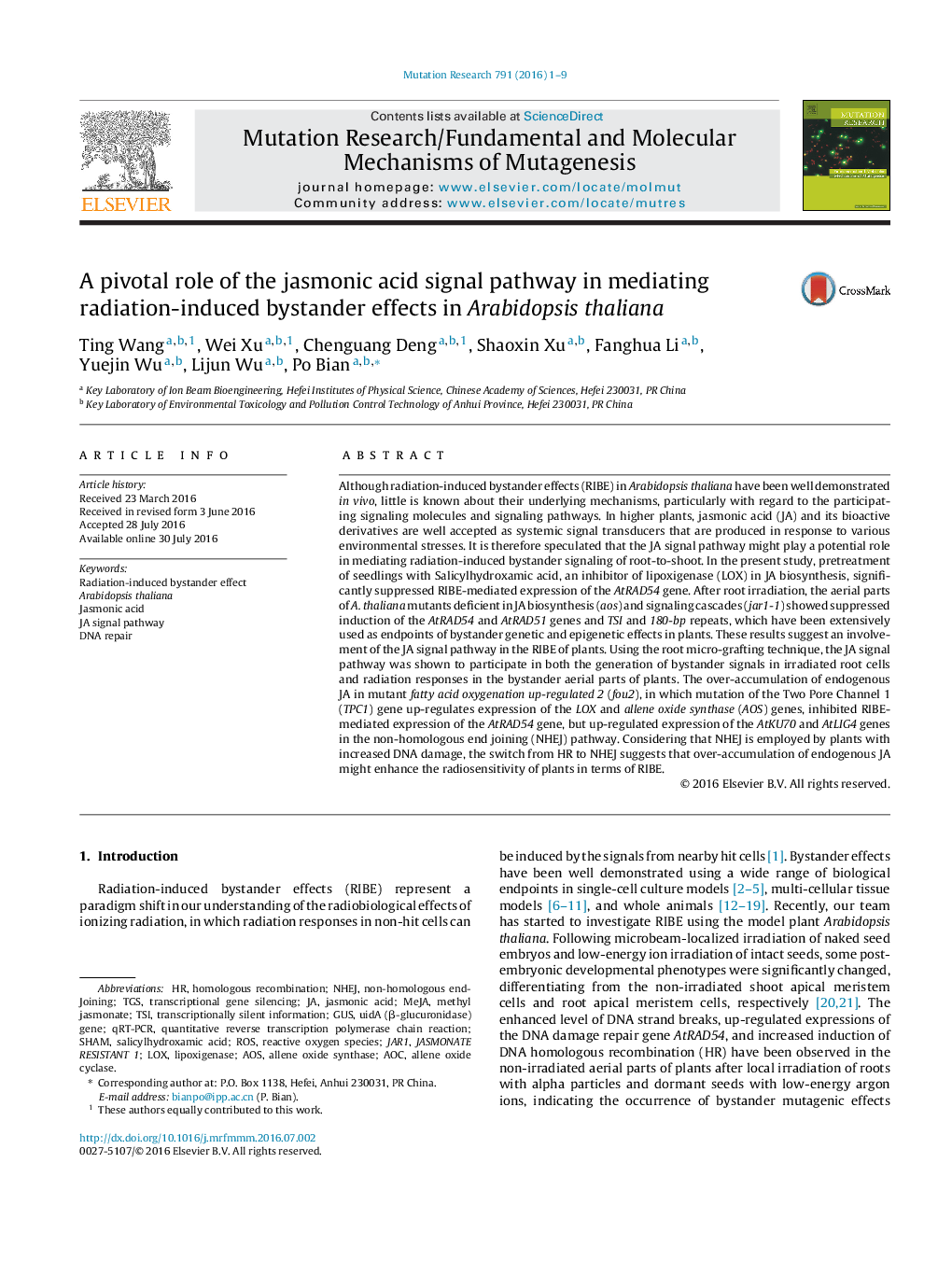| Article ID | Journal | Published Year | Pages | File Type |
|---|---|---|---|---|
| 2146095 | Mutation Research/Fundamental and Molecular Mechanisms of Mutagenesis | 2016 | 9 Pages |
•The JA signal pathway plays a pivotal role in mediating radiation-induced bystander effects in Arabidopsis thaliana.•The JA signal pathway is involved in both the generation of bystander signals in irradiated roots and radiation responses in bystander aerial plants.•Over-accumulation of endogenous JA enhances the radiosensitivity of plants in terms of RIBE.
Although radiation-induced bystander effects (RIBE) in Arabidopsis thaliana have been well demonstrated in vivo, little is known about their underlying mechanisms, particularly with regard to the participating signaling molecules and signaling pathways. In higher plants, jasmonic acid (JA) and its bioactive derivatives are well accepted as systemic signal transducers that are produced in response to various environmental stresses. It is therefore speculated that the JA signal pathway might play a potential role in mediating radiation-induced bystander signaling of root-to-shoot. In the present study, pretreatment of seedlings with Salicylhydroxamic acid, an inhibitor of lipoxigenase (LOX) in JA biosynthesis, significantly suppressed RIBE-mediated expression of the AtRAD54 gene. After root irradiation, the aerial parts of A. thaliana mutants deficient in JA biosynthesis (aos) and signaling cascades (jar1-1) showed suppressed induction of the AtRAD54 and AtRAD51 genes and TSI and 180-bp repeats, which have been extensively used as endpoints of bystander genetic and epigenetic effects in plants. These results suggest an involvement of the JA signal pathway in the RIBE of plants. Using the root micro-grafting technique, the JA signal pathway was shown to participate in both the generation of bystander signals in irradiated root cells and radiation responses in the bystander aerial parts of plants. The over-accumulation of endogenous JA in mutant fatty acid oxygenation up-regulated 2 (fou2), in which mutation of the Two Pore Channel 1 (TPC1) gene up-regulates expression of the LOX and allene oxide synthase (AOS) genes, inhibited RIBE-mediated expression of the AtRAD54 gene, but up-regulated expression of the AtKU70 and AtLIG4 genes in the non-homologous end joining (NHEJ) pathway. Considering that NHEJ is employed by plants with increased DNA damage, the switch from HR to NHEJ suggests that over-accumulation of endogenous JA might enhance the radiosensitivity of plants in terms of RIBE.
